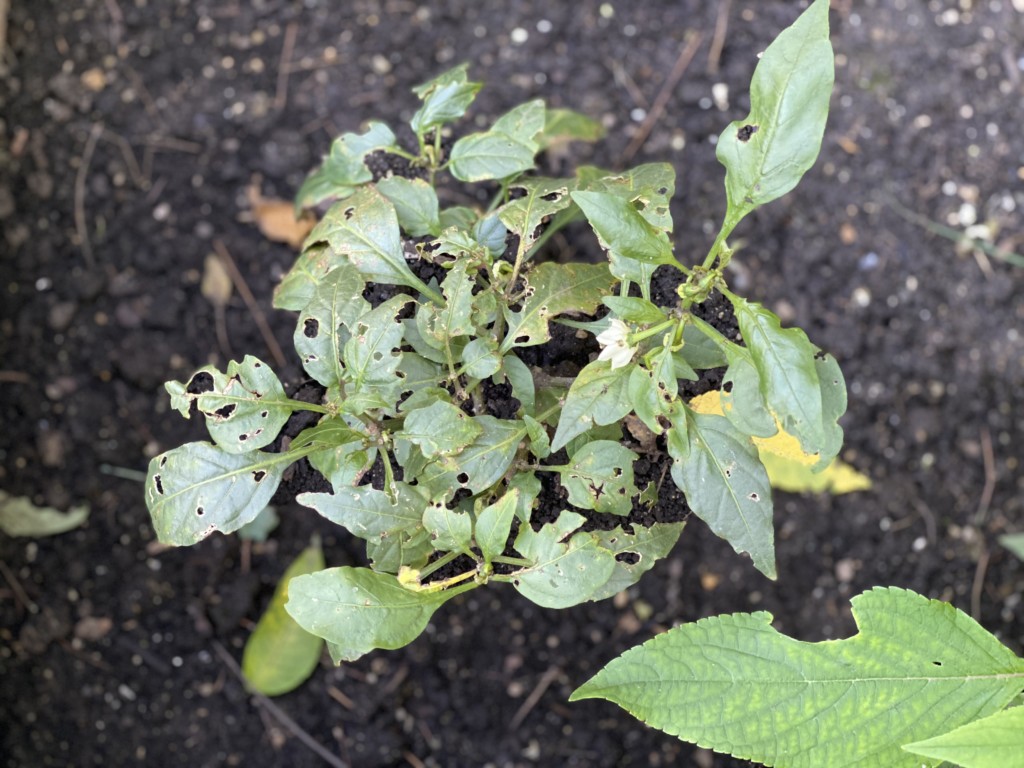With this year’s stay-at-home orders, we have had more time to tend to our homes than ever before. With no more obligations and excuses, we made our DIY lists and set out to make our home our sanctuary from the outside world. For me, this included planning my very best vegetable and herb garden. I started my seeds, thanks to online ordering and this nifty kit, and watched them rapidly grow while it snowed outside. Once Mother’s Day rolled around, and we were in the clear from any upcoming cold snaps, I went to work.
Gardening has often been a form of self care and meditation for many. I tune in to an audiobook and tend to my garden space daily, eagerly awaiting for my kale, tomatoes, cucumbers, peas and more to show up. So when I do my daily check in and find my peas ravaged by slugs, and my jalapeño plant chewed to bits, you can bet it’s heartbreaking. And I’m not alone. My neighborhood group chat is full of the same complaints and laments — often with miracles cures that work for some, like placing dishes of beer to catch slugs, but not others.
To get to the root of the problem, I asked Kathie Hayden, Manager, Plant Information Service at the Chicago Botanic Garden for advice on saving our gardens this summer, and prepping for better gardens in the future. Here’s what she had to say.

With many of us having the time to cultivate our at-home gardens this spring and summer, it’s disheartening to find your garden ravaged by bugs and pests. What are some common pests found in gardens around Illinois?
It is not uncommon to find a large variety of insects and other pests in our gardens. Some of the more common pests are:
- Aphids are probably more commonly seen than most other insects because they affect such a wide range of plants, including trees, shrubs, perennials, annuals and vegetables.
- Japanese beetles feed on leaf and flower tissue of a variety of trees, shrubs, and ornamental plants.
- Scales, both soft-bodied and hard (armored), are frequently seen in the landscape on trees, with magnolia scale being most common.
- Both adult and larval stages of viburnum leaf beetles can cause significant damage to viburnum shrubs.
View this post on Instagram
Are there any organic or “kind” treatments to remove or deter pests?
There are many different “kinder” treatments to remove or deter pests, depending on the types of plants:
- Hand removal of larger insects such as caterpillars and using strong sprays of water on smaller insects such as aphids are the best ways to remove pests from the garden.
- Japanese beetles can be knocked into a bucket of soapy water.
- Horticultural oils can kill or repel insects, such as aphids or scale nymphs.
- Neem oil, extracted from the tropical neem tree, (Azadirachta indica) may be effective as an insecticide and has a very low toxicity to mammals.
- Plant more resistant varieties. This is important to avoid many different pests, especially viburnum leaf beetle.
View this post on Instagram
Are there bugs and such that are good for the garden, and what can we do to promote them?
It’s important to remember that not all insects, even ones that are causing damage to our plants, should be removed from the garden. Those caterpillars that are feeding on your herbs may pupate to gorgeous butterflies; the round holes on the margins of the rose leaves are created by leaf-cutting bees that are pollinating plants. Miticides will not only kill mites causing plant damage, but will also kill predatory mites that are feeding on the ones doing the damage. Spraying insecticides will kill the lady beetles feeding off the aphids and threaten the bees that are vital for pollination.
- Planting wildflowers and native plants can attract important pollinators, such as bees and butterflies.
- Reducing the use of insecticides will attract beneficials insects, birds, and other wildlife, to your garden.
- Purchasing and releasing beneficial insects, such as green lacewings, which are natural enemies of many soft-bodied insects and eggs, can be an effective insect management strategy. Though beneficial insects do not always stay where they are released, a certain percentage may, which can prove helpful.
If you have a plant that has really seen some damage, is there any hope to revive it?
This depends on the type of plant and severity of the damage. Plants that are severely defoliated can lose their ability to photosynthesize, therefore threatens its overall health. Trees and shrubs that defoliate year after year can decline and this will predispose them to other problems. Plants rarely recover from damage caused to their root systems.
If a smaller percentage of a plant is affected and continues to produce new growth, chances are good that it will survive. Healthy plants have a much better chance of surviving damage from insects or disease. It is extremely important to plant the “right plant in the right place,” to keep them as healthy as possible.
Ready to get out and garden? Here are some tools we love:
If you buy something through our links, Make It Better Media Group may earn an affiliate commission.
How You Can Help:
Hunger has become a devastating side effect of the Pandemic – but you can help right now. Learn more.
More from Better:
- A Recipe for Success: How Jeni’s Splendid Ice Creams Has Managed To Thrive Through Crisis
- Staying Healthy and Giving Back In The Time of COVID-19: A Conversation With Karen Malkin
- A Weekend on Mackinac Island: What To Do, Where To Eat & How To Best Enjoy This Midwestern Gem
 Macaire Douglas lives in the Chicago suburbs with her husband and two sons. She proudly supports Save Abandoned Babies Foundation, a Chicago-based nonprofit organization that works tirelessly to prevent the illegal abandonment of newborns nationwide. Since its inception in 2000, more than 3,600 newborns have been safely surrendered and adopted into loving homes.
Macaire Douglas lives in the Chicago suburbs with her husband and two sons. She proudly supports Save Abandoned Babies Foundation, a Chicago-based nonprofit organization that works tirelessly to prevent the illegal abandonment of newborns nationwide. Since its inception in 2000, more than 3,600 newborns have been safely surrendered and adopted into loving homes.

